MED NEWS 02/2021
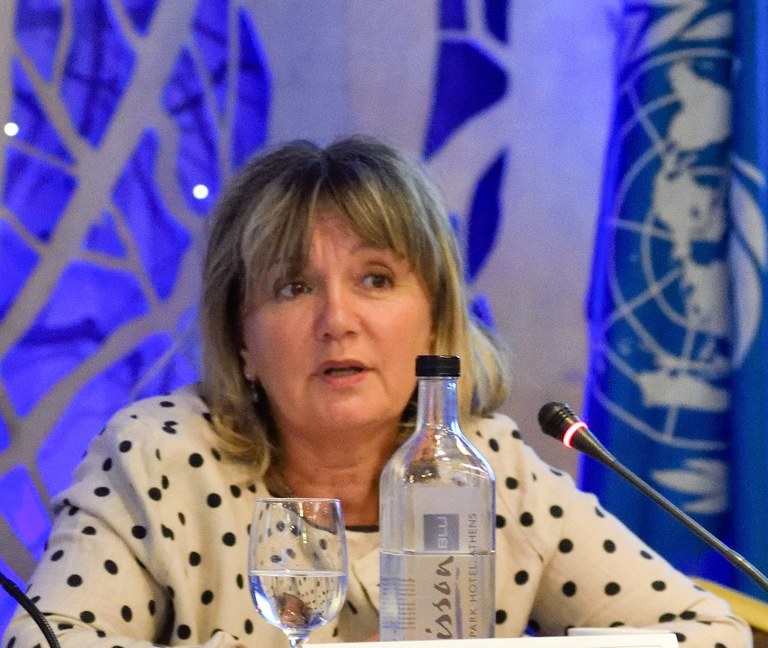 Editorial
Editorial
By Tatjana Hema, Coordinator of the UNEP/MAP-Barcelona Convention Secretariat
Continuity, enhanced integration and renewed commitment
On 1 July 2021 I assumed my duties of Coordinator of the Mediterranean Action Plan (MAP), taking over from Gaetano Leone, who recently retired after seven years of outstanding service at the helm of the UNEP/MAP-Barcelona Convention Secretariat.
As many of you know, I am not new to MAP. I have worked in the Secretariat for several years and in various positions. I see in my latest appointment by the UNEP Executive Director an expression of appreciation for the work that the entire MAP-Barcelona Convention Secretariat, including the Regional Activity Centres (RACs), has competently delivered. I also see a clear message on the importance of continuity. As I embark on this new professional journey, I am determined to draw upon the leadership of the Contracting Parties and build on what UNEP/MAP has achieved with a view to addressing the triple crisis of climate change, biodiversity loss and pollution that the Mediterranean is grappling with.
The goal is to divert current trajectories towards more sustainable and resilient paths. The new UNEP/MAP Medium-Term Strategy 2022-2027, to be examined for adoption this December at the 22nd Meeting of the Contracting Parties (COP 22) in Antalya, Turkey, will guide our collective efforts to achieve this crucial mission in line with UNEP’s mandate and within the framework of the global agenda and the commitment that it has generated.
I am fully aware of the complex nature of the issues in hand. Luckily, we have a robust platform for a stronger collective effort. UNEP/MAP has delivered a vast body of assessments, and devised strategies, action plans and concrete measures to help Contracting Parties accelerate the transition to sustainability across a wide thematic spectrum: from Sustainable Consumption and Production (SCP)—as the linchpin of circular economies—to curbing marine pollution and expanding the protection of marine and coastal species to achieve Good Environmental Status. The vision is clear, but the journey ahead is challenging.
Fostering political commitment is essential to the transformational changes needed in all sectors. This will be among the priorities that I will be pursuing in my new role. Implementation and enforcement of the Barcelona Convention and its Protocols, breaking the silos through greater integration at all levels, and effective collaboration and outreach are critical to the achievement of the 2030 Agenda for Sustainable Development and its Sustainable Development Goals (SDGs) in the Mediterranean region.
I will strive for a nimble, efficient and forward-looking UNEP/MAP-Barcelona Convention system that responds adequately to existing and emerging challenges in the Mediterranean and serves the Contracting Parties to the Barcelona Convention and its Protocols at the highest standards.
I am confident that COP 22—the first meeting of the Contracting Parties to take place after the global pandemic rose on the Mediterranean horizon—will serve as a new push for effective multilateralism and coordinated action among Mediterranean countries and the European Union.
Gender equality and enhancing the way we listen to and work with youth in the Mediterranean will also receive adequate attention. As we step up efforts to spur a post-COVID green renaissance in the Mediterranean, we must and will do more to ensure that no one is left behind in the delivery of the UNEP/MAP Programme of Work and the projects that we implement with our partners.

LESSON LEARNED: TORRE GUACETO – ENFORCEMENT WORKS
On the occasion of the International Day of Biodiversity, UNEP / MAP has dedicated several articles in order to mark the 2021 edition of this event.
Established in 1991, the Marine Protected Area (MPA) of Torre Guaceto covers an area of 2.227 hectares along the Adriatic coast of Italy. The first protection measures date back to 1970, but legislative action for the protection of the area started ...
Established in 1991, the Marine Protected Area (MPA) of Torre Guaceto covers an area of 2.227 hectares along the Adriatic coast of Italy. The first protection measures date back to 1970, but legislative action for the protection of the area started in earnest in 1981 with the declaration of Torre Guaceto as a “Wetland of International Interest” under the Ramsar Convention. 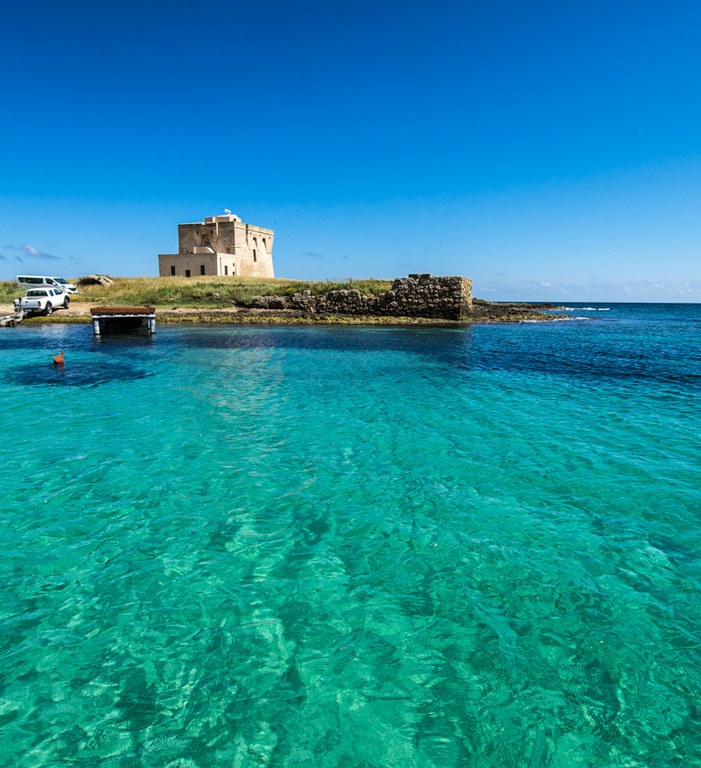
Six years later, WWF Italy carried out the feasibility plan for the establishment of a marine reserve, which became a reality on 4 December 1991 by virtue of a ministerial decree. The newly established MPA of Torre Guaceto was entrusted to the Coast Guard of Brindisi. In 2000, Torre Guaceto became the first example of integrated management of a protected coastal zone in the country.
Local fishers felt strongly about their right to make a living in the area where their ancestors had casting their nets for centuries. When the enforcement of no-take measures began, they found themselves at loggerheads with the authorities. From 2000-2001 all fishing activities had been banned in the entire MPA area and frictions between local fishers and the authorities ensued.
The introduction of regulated fishing activity based on an agreement between the fishers and the MPA authority eventually put an end to the dispute. Fishers who adhered to what became in 2005 as a “co-management protocol” committed to the protection of predator species, fish in juvenile stages and benthic communities and habitats. The community could now fish in buffer zones surrounding two no-take zones demarcated in the area.
In order to reduce the impact of fishing activities, the community accepted to use shorter trammel nets (1 km-long as opposed to the usual 2-3 km) with larger mesh size (3 cm), and to haul the nets only once every week. They also agreed to reduce fishing as soon as signs of overfishing would be detected. Data routinely collected through the monitoring of fishery yields and catch composition would keep the MPA authority and the fishers abreast of the impact of fishing on the natural resources of the area.
The science-based monitoring continues uninterrupted since 2005, thus helping manage fishing activities in an adaptive co-management experiment that makes the Torre Guaceto MPA a success story in the Mediterranean. In 2009 the site was included in the List of Specially Protected Areas of Mediterranean Importance (SPAMIs) established under the SAP/BD Protocol of the Barcelona Convention.
According to the Torre Guaceto MPA authority, every euro invested in conservation, yields a return of around 11 euros in shared benefits. This and the rigor of management applied at the MPA are credited for a steady increase in social acceptance and recognition.

THE PLIGHT OF MEDITERRANEAN ECOSYSTEMS
On the occasion of the two World Days dedicated respectively to the Environment and Oceans, which took place on 5 and 8 June 2021 respectively, UNEP / MAP has drawn up several articles in order to mark these two events in the Mediterranean Region. The 2021 edition of World Environment Day has been marked by the formal launch of the UN Decade on Ecosystem Restoration 2021 – 2030 while the one of World Oceans Day has celebrated the theme “The Ocean: Life and Livelihoods”. These two themes are intertwined, especially in the Mediterranean context, because ecosystem restoration, that have suffered degradation or destruction, and conservation of these latter are essentiel to preserving marine life and livelihoods.
Two flagship reports supported by UNEP / MAP - Barcelona Convention System and released this year, the State of the Environment and Development in the Mediterranean (SoED) and the First Mediterranean Assessment Report (MAR1), reveal that the ...
Two flagship reports supported by UNEP / MAP - Barcelona Convention System and released this year, the State of the Environment and Development in the Mediterranean (SoED) and the First Mediterranean Assessment Report (MAR1), reveal that the Mediterranean is in collision with nature.
 The ‘twin reports’ point out that the global triple crisis due to climate change, biodiversity loss and pollution has already caused a hefty toll on ecosystems with increasingly acute impacts on human wellbeing. Making peace with nature in the Mediterranean would entail addressing the root causes of the environmental crisis.
The ‘twin reports’ point out that the global triple crisis due to climate change, biodiversity loss and pollution has already caused a hefty toll on ecosystems with increasingly acute impacts on human wellbeing. Making peace with nature in the Mediterranean would entail addressing the root causes of the environmental crisis.
In the context of the recovery from COVID-19, evidence-based policies should invest in ecosystem restoration while paving the way for more sustainable and resilient economies that decouple development from ecosystem degradation. The UNEP/MAP-Barcelona Convention Secretariat has labelled this ambitious but feasible outcome thanks to “green renaissance in the Mediterranean”.

THE ECOSYSTEM APPROCH IN THE MEDITERRANEAN
On the occasion of the two World Days dedicated respectively to the Environment and Oceans, which took place on 5 and 8 June 2021 respectively, UNEP / MAP has drawn up several articles in order to mark these two events in the Mediterranean Region. The 2021 edition of World Environment Day has been marked by the formal launch of the UN Decade on Ecosystem Restoration 2021 – 2030 while the one of World Oceans Day has celebrated the theme “The Ocean: Life and Livelihoods”. These two themes are intertwined, especially in the Mediterranean context, because ecosystem restoration, that have suffered degradation or destruction, and conservation of these latter are essentiel to preserving marine life and livelihoods.
The Ecosystem Approach refers to an overarching principle embedded in the work of the UNEP/MAP-Barcelona Convention system but also to a visionary roadmap of "a healthy Mediterranean with marine and coastal ecosystems that are productive and ...
The Ecosystem Approach refers to an overarching principle embedded in the work of the UNEP/MAP-Barcelona Convention system but also to a visionary roadmap of "a healthy Mediterranean with marine and coastal ecosystems that are productive and biologically diverse for the benefit of present and future generations".
As part of the Ecosystem Approach roadmap, the Contracting Parties have adopted eleven Ecological Objectives that address key elements of the Mediterranean marine and coastal environment. These objectives constitute the backbone of a harmonized regional system that allows UNEP/MAP and the Contracting Parties to take the pulse of Mediterranean ecosystems: the Integrated Monitoring and Assessment Programme of the Mediterranean Sea and Coast and Related Assessment Criteria (IMAP). 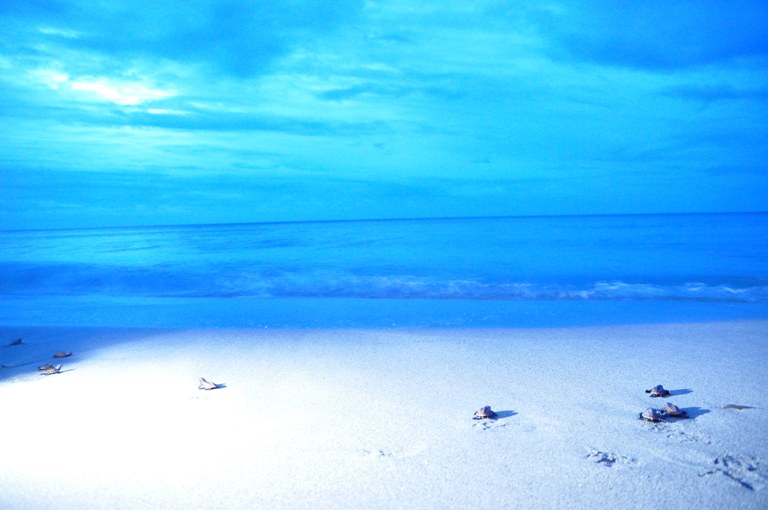
Introduced by UNEP/MAP and adopted by the Contracting Parties in 2016, IMAP has transformed the way in which monitoring and assessment of the status of the marine and coastal environment are conducted. Components of UNEP/MAP support Mediterranean countries in this endeavor by providing technical expertise and capacity building, but also by delivering pilote projects in order to bolster at national level command of monitoring and assessment tools and methods .
UNEP/MAP and the Contracting Parties are building together the monitoring and assessment infrastructure needed for evidence-based ecosystem restoration in the Mediterranean. The Coordinating Unit of UNEP/MAP is currently implementing three EU-funded projects seeking to remove hurdles to the full implementation of IMAP for the benefit of the entire region: EcAp MED III, IMAP-MPA and Marine Litter MED.

ENFORCEMENT OF LEGAL INSTRUMENTS TO BOOST ECOSYSTEM RESTORATION
On the occasion of the two World Days dedicated respectively to the Environment and Oceans, which took place on 5 and 8 June 2021 respectively, UNEP / MAP has drawn up several articles in order to mark these two events in the Mediterranean Region. The 2021 edition of World Environment Day has been marked by the formal launch of the UN Decade on Ecosystem Restoration 2021 – 2030 while the one of World Oceans Day has celebrated the theme “The Ocean: Life and Livelihoods”. These two themes are intertwined, especially in the Mediterranean context, because ecosystem restoration, that have suffered degradation or destruction, and conservation of these latter are essentiel to preserving marine life and livelihoods.
The UNEP/MAP-Barcelona Convention system has made significant progress in building a robust legal framework that supports the restoration of dammaged marine and coastal ecosystems and ensures the protection of healthy ones. However compliance and ...
The UNEP/MAP-Barcelona Convention system has made significant progress in building a robust legal framework that supports the restoration of dammaged marine and coastal ecosystems and ensures the protection of healthy ones. However compliance and enforcement - or not - of legal instruments constitute areas where swift and resolute action by the Contracting Parties can deliver significant benefits for the region and its peoples. This is a crucial building block for a green renaissance in the post-COVID era.
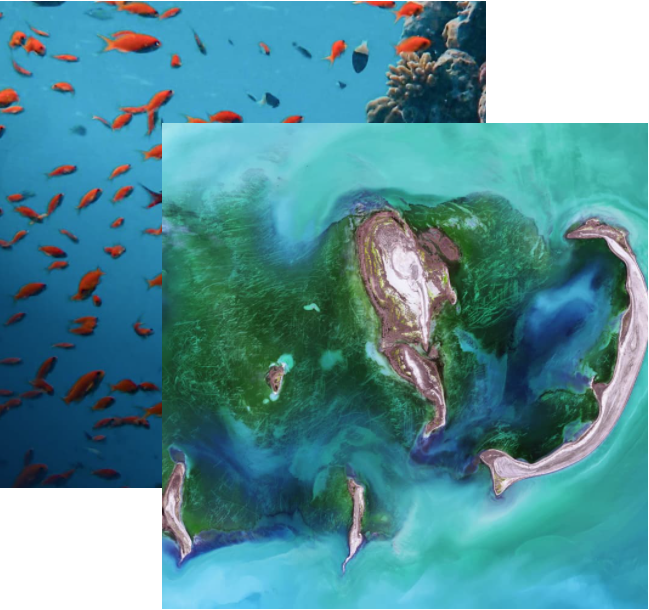 There is an opportunity to harness efforts for a post-pandemic recovery in order to accelerate enforcement and compliance of these legal instruments under the Barcelona Convention and its Protocoles at the national level: This would represent the best chance for the Mediterranean Region to make peace with nature, at a hitherto unprecedented pace and scale, but also would constitue a well-defined and straightforward path that would translate into a ‘quantum leap’ towards sustainability and resilience in the entire region.
There is an opportunity to harness efforts for a post-pandemic recovery in order to accelerate enforcement and compliance of these legal instruments under the Barcelona Convention and its Protocoles at the national level: This would represent the best chance for the Mediterranean Region to make peace with nature, at a hitherto unprecedented pace and scale, but also would constitue a well-defined and straightforward path that would translate into a ‘quantum leap’ towards sustainability and resilience in the entire region.

MedProgramme: A LANDMARK CONTRIBUTION TO THE UN DECADE ON ECOSYSTEM RESTORATION
On the occasion of the two World Days dedicated respectively to the Environment and Oceans, which took place on 5 and 8 June 2021 respectively, UNEP / MAP has drawn up several articles in order to mark these two events in the Mediterranean Region. The 2021 edition of World Environment Day has been marked by the formal launch of the UN Decade on Ecosystem Restoration 2021 – 2030 while the one of World Oceans Day has celebrated the theme “The Ocean: Life and Livelihoods”. These two themes are intertwined, especially in the Mediterranean context, because ecosystem restoration, that have suffered degradation or destruction, and conservation of these latter are essentiel to preserving marine life and livelihoods.
The GEF-supported “Mediterranean Sea Programme (MedProgramme): Enhancing Environmental Security (2020-2025)” is a response to the challenges affecting densely populated coastal regions and their ecosystems. UNEP/MAP led the elaboration of a set of ...
The GEF-supported “Mediterranean Sea Programme (MedProgramme): Enhancing Environmental Security (2020-2025)” is a response to the challenges affecting densely populated coastal regions and their ecosystems. UNEP/MAP led the elaboration of a set of seven child projects that will deploy more than 100 coordinated actions at the regional and national levels. 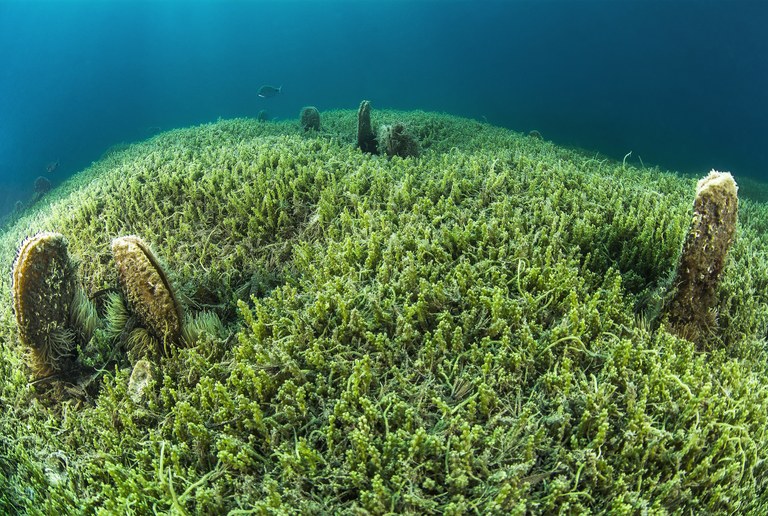
The MedProgrammme will reinforce the capacity of ten Mediterranean countries (Albania, Algeria, Bosnia and Herzegovina, Egypt, Lebanon, Libya, Montenegro, Morocco, Tunisia and Turkey) in order to reach their environmental objectives under the Barcelona Convention and other Multilateral Environmental Agreements (MEAs).
An unprecedented partnership for regional cooperation has rallied behind the MedProgramme’s execution to address pressing challenges in the region, including the high pressures exerted on water (aquifers, in particular, as a major water resource in contexts of scarcity) and on habitats, biodiversity and landscapes. The emission of nutrients and wastewater, solid waste, marine litter and microplastics, as well as industrial waste are also addressed. National and transboundary interventions will seek to achieve environmental security in the entire Mediterranean region through the reduction of land-based pollution in coastal hotspots, the enhancement of sustainability and climate resilience in the coastal zones, and the protection of marine biodiversity.

THE MULTIPLE FACETS OF ECOSYSTEM RESTORATION UNDER THE BARCELONA CONVENTION
On the occasion of the two World Days dedicated respectively to the Environment and Oceans, which took place on 5 and 8 June 2021 respectively, UNEP / MAP has drawn up several articles in order to mark these two events in the Mediterranean Region. The 2021 edition of World Environment Day has been marked by the formal launch of the UN Decade on Ecosystem Restoration 2021 – 2030 while the one of World Oceans Day has celebrated the theme “The Ocean: Life and Livelihoods”. These two themes are intertwined, especially in the Mediterranean context, because ecosystem restoration, that have suffered degradation or destruction, and conservation of these latter are essentiel to preserving marine life and livelihoods.
A blue economy aligned with SDG 14 can pave the way for the green renaissance that we wish to see in the Mediterranean Region. In a paper on the blue economy in the Mediterranean, released in 2020, Plan Bleu, the France-based Regional Activity ...
A blue economy aligned with SDG 14 can pave the way for the green renaissance that we wish to see in the Mediterranean Region. In a paper on the blue economy in the Mediterranean, released in 2020, Plan Bleu, the France-based Regional Activity Centre of UNEP/MAP, highlighted the main issues and challenges constraining the region’s efforts to tap the potential of this economy that is a low polluting, resource-efficient and circular economy based on sustainable consumption and production patterns, enhancing human well-being and social equity, generating economic value and employment, and significantly reducing environmental risks and impact on biodiversity.
Zoonotic spillover has demonstrated in the most tragic of ways that the protection of biodiversity is not only critical to nature but also to human health. In the Mediterranean region, SPA/RAC, the Tunisia-based Regional Activity Centre of UNEP/MAP, is currently working on the development of the post-2020 Strategic Action Programme for the Conservation of the Biological Diversity and sustainable use of natural resources in the Mediterranean Region (post-2020 SAPBIO), which would lead to prioritizing and planning urgent actions at the regional and national levels for the sustainable management of Mediterranean biodiversity until 2030. The post-2020 Regional Strategy for Marine and Coastal Protected Areas (MCPAs) and Other Effective area-based Conservation Measures (OECMs)—also under preparation—is expected to boost conservation in the Mediterranean Sea and coast. 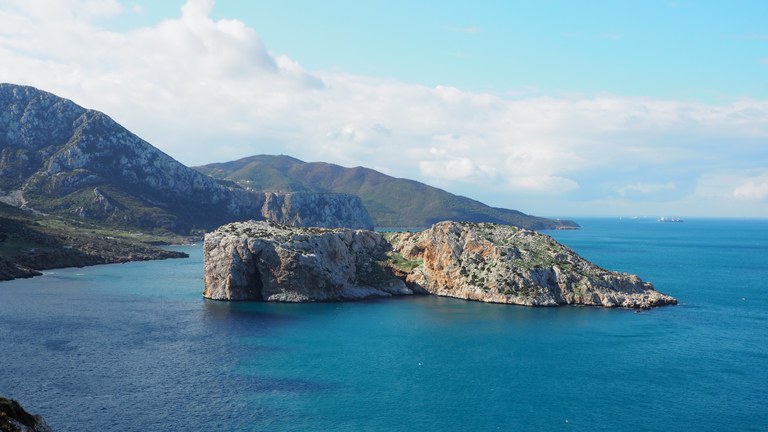
Article 10 of the Protocol on Integrated Coastal Zone Management in the Mediterranean (ICZM Protocol) of the Barcelona Convention indicates that the Contracting Parties “shall take measures to protect certain specific coastal ecosystems: wetlands and estuaries; marine habitats; coastal forests and woods; and dunes”. PAP/RAC, the Croatia-based Regional Activity Centre of UNE/MAP, is working to step up coastal ecosystem restoration. PAP/RAC has recently contributed to the formulation of green adaptation options—a set of solutions based on the Ecosystem Approach that range from reinforcing natural defenses, such as dunes and cliffs, to maintaining and restoring coastal wetlands and seagrass.
Coming from land and often from the coast, marine litter remains one of the most arduous challenges hampering ecosystem restoration efforts in the Mediterranean. The combination of overly tolerant existing regulations and unbridled production and consumption patterns generates excessive amounts of waste. It is estimated that 730 tonnes of plastic end up in the Mediterranean Sea every day.
In 2018, SCP / RAC, the UNEP / MAP Regional Activity Center based in Spain, helped identify over 100 actions to reduce marine litter, including activities that can be implemented in marine litter areas. marine protected areas (MPAs) to safeguard important ecosystem services.
Since 2020, SCP/RAC supports marine litter prevention and mitigation measures in three MPAs located in Italy and Spain. In the Miramare MPA (Italy), measures are now in place to curb littering caused by mussel nets. In the Spanish natural parks of Ebro Delta and Cabo de Gata-Níjar, SCP/RAC interventions focus on curbing marine litter originating from bars, festivals and other recreative activities, including the infamously ubiquitous beverage containers made of PET.
Promoting the concept of "Extended Producer Responsibility" (EPR), which is part of waste disposal measures, is an important concept that highlights the central role of the private sector in efforts to restore ecosystems. In the Mediterranean context, maritime transport is one of the sectors where industry plays a central role in bending the pollution curve and ensuring that growth does not come at the expense of the natural systems that underpin life and livelihoods. 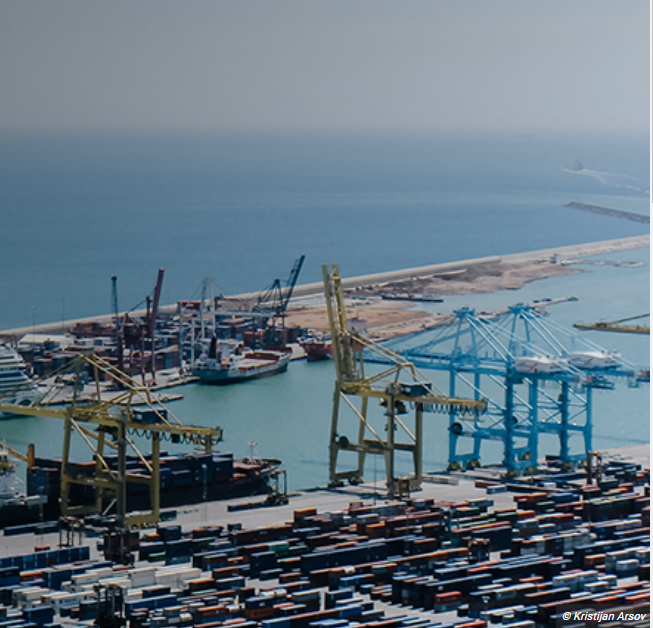
REMPEC, the Malta-based Regional Activity Center jointly administered by UNEP / MAP and the International Maritime Organization (IMO), is making progress in cleaner maritime transport in the Mediterranean. The possible designation of the Mediterranean Sea as a “Sulfur Oxide Emission Control Area (Med SOx ECA) would make it one of the busiest waterways in the world.
Emissions from ships contribute to the overall air quality degradation in the Mediterranean region, particularly in coastal zones. Emissions of Sulphur Oxides (SOx), in particular, can cause acid rain that harms ecosystems. They can also combine with other pollutants to generate fine particles, the inhalation of which can lead to respiratory and cardiovascular ailments.
The REMPEC endeavor is part of the implementation of the Regional Strategy for Prevention of and Response to Marine Pollution from Ships (2016-2021). In addition, the Ballast Water Management Strategy for the Mediterranean Sea (2022-2027), currently being prepared by REMPEC in consultation with SPA/RAC, will address the introduction of non-indigenous species (NIS) by shipping activities.
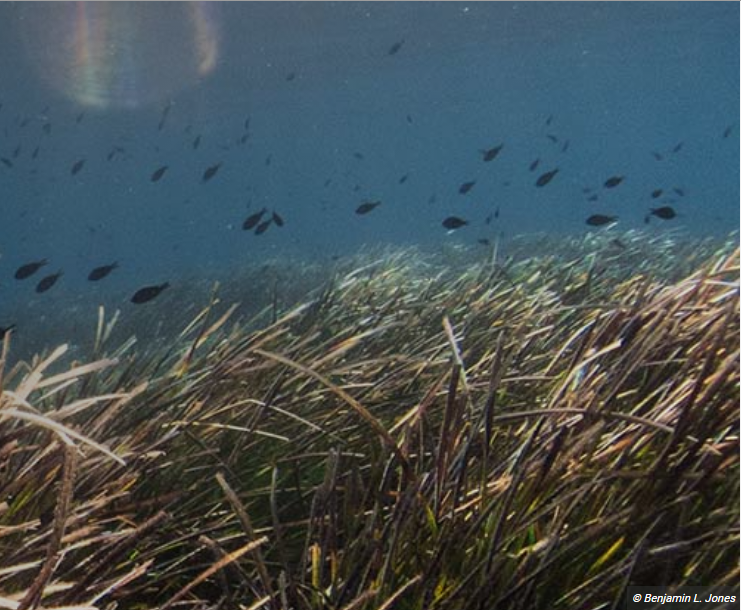 More than 1,000 non-indigenous species have already been identified in the Mediterranean. Invasive species disrupt the natural balance of ecosystems, and so do human-made pollutants released into the coastal and marine environment.
More than 1,000 non-indigenous species have already been identified in the Mediterranean. Invasive species disrupt the natural balance of ecosystems, and so do human-made pollutants released into the coastal and marine environment.
MED POL, the UNEP/MAP Programme for the Assessment and Control of Marine Pollution in the Mediterranean, is spearheading efforts in the formulation and implementation of pollution monitoring, control and prevention as well as regulatory measures aiming to bolster ecosystem restoration. The Regional Plan on the Reduction of Biochemical Oxygen Demand (BOD) from Urban Wastewater, which MED POL is currently upgrading, is a case in point.
BOD measures the amount of oxygen required or consumed for the microbiological decomposition of organic material in water: the more organic pollution, the less oxygen to sustain marine ecosystems.
The Regional Plan on Marine Litter Management in the Mediterranean—another instrument being upgraded by MED POL— and a new Regional Plan on Sewage Sludge Management are part of a raft of pro-sustainability measures to be considered by the twenty-second Meeting of the Contracting Parties to the Barcelona Convention and its Protocols (COP 22, December 2021, Antalya, Turkey).
The next Medium-Term Strategy (2022-2027) to be considered for adoption by the Contracting Parties at COP 22 will concentrate the UNEP/MAP expertise and resources on accelerating ecosystem restoration, among other green pursuits.

A GENDER-BASED APPROACH TO BIODIVERSITY MANAGEMENT IN THE MEDITERRANEAN
On the occasion of the International Day of Biodiversity, UNEP / MAP has dedicated several articles in order to mark the 2021 edition of this event.
As we mark International Day for Biological Diversity, it is important to recognize that understanding women and men’s influence on natural resources and differences in capacity, skills and knowledge is key to devising sustainable and inclusive ...
As we mark International Day for Biological Diversity, it is important to recognize that understanding women and men’s influence on natural resources and differences in capacity, skills and knowledge is key to devising sustainable and inclusive solutions to biodiversity management challenges. Practitioners and policymakers must address gender-related differences in the design and implementation of those solutions in the wider context of sustainable development. 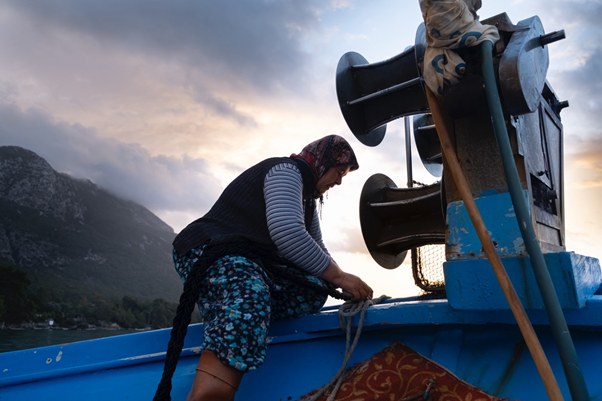
The Convention on Biological Diversity addresses gender issues by identifying and assessing women and men’s differentiated roles vis-a-vis biodiversity, including different responsibilities, priorities, decision-making power, and knowledge, all of which affect how individuals use and manage biological resources. Read more.
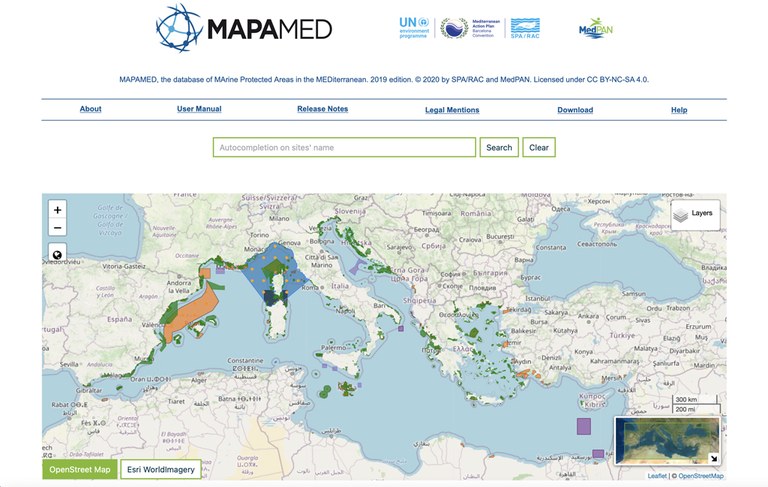
New edition of MAPAMED, the database of MArine Protected Areas in the Mediterranean
The MAPAMED database has evolved significantly since the 2017 edition. The new edition was released on April 2021. The new features of the database were presented during a webinar organized by UNEP/MAP-SPA/RAC and MedPAN.
The new edition of ...
The MAPAMED database has evolved significantly since the 2017 edition. The new edition was released on April 2021. The new features of the database were presented during a webinar organized by UNEP/MAP-SPA/RAC and MedPAN.
The new edition of MAPAMED takes into account all officially designated sites as of 31 December 2019. This represents 1,320 sites in total, of which 1,126 are Marine Protected Areas (MPAs). Among these MPAs, 257 have a national designation status.
The MAPAMED data have been validated by the Specially Protected Areas and Biological Diversity (SPA/BD) Focal Points, in the framework of the Barcelona Convention. These data can be viewed here.
The online viewer allows browsing and searching of spatial and attribute data. It also allows downloading the data and associated documentation, since all the data are licensed under Creative Commons.
Detailed information on the definitions and criteria that have been used as a basis for including sites in MAPAMED are available in the MAPAMED User Manual (April 2021 version) and the Release Notes (2019 edition).
A webinar (1 hour) held on 22 April 2021 was organized to present the new features of the database. Click here to watch the recording.
If you have any questions about the MAPAMED database, please send a message to contact@mapamed.org.
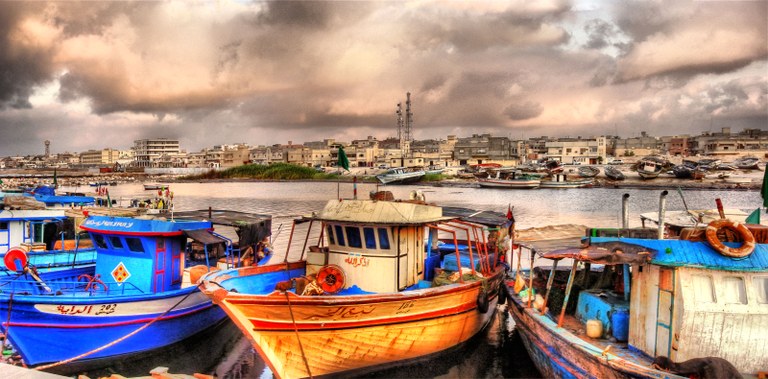
THE GULF OF SIRTE: A MARINE BIODIVERSITY HOTSPOT TO PROTECT
An environmental and socioeconomic assessment of the Gulf of Sirte, elaborated by UNEP/MAP-SPA/RAC in collaboration with the Libyan experts within the EU funded IMAP-MPA project, highlights the need to further protect selected sites within the Gulf and secure fisheries sustainability.
An environmental and socioeconomic assessment of the Gulf of Sirte, elaborated by UNEP/MAP-SPA/RAC in collaboration with the Libyan experts within the EU funded IMAP-MPA project, highlights the need to further protect selected sites within the Gulf ...
An environmental and socioeconomic assessment of the Gulf of Sirte, elaborated by UNEP/MAP-SPA/RAC in collaboration with the Libyan experts within the EU funded IMAP-MPA project, highlights the need to further protect selected sites within the Gulf and secure fisheries sustainability.
A technical workshop for the presentation of the ecological and socioeconomic assessments of the marine and coastal area of the Gulf of Sirte in Libya has been organized online on 1st April 2021 by SPA/RAC in collaboration with the Ministry of Environment of Libya.
The Gulf of Sirte is one of the beneficiary sites of the IMAP-MPA project that is being coordinated by UNEP/MAP Secretariat and implemented by SPA/RAC in order to develop the integrated monitoring of the sea and coasts and to improve Marine Protected Areas (MPAs) management in Southern and Eastern Mediterranean countries.
Despite the COVID-19 pandemic, an environmental and socioeconomic assessments of the Gulf of Sirte have been carried out to draw up recommendations on biodiversity conservation. This process ultimately aims to identify the most suitable sites to be declared as MPAs, and to prepare the ground for their effective management.
The ecological study revealed that the Gulf of Sirt provides suitable habitats for several species, including endangered species of sea turtles in particular the Loggerhead turtle Caretta caretta, marine mammals, seabirds and seagrasses. It represents also an important spawning area for elasmobranchs. The study highlighted the need to secure fisheries sustainability, which currently have a heavy impact on the fish stocks and certain species of sharks.
The socioeconomic survey conducted in the Gulf showed that about 66% of the fishers interviewed were very positive towards the creation of marine protected areas in the region. They say, reported the experts, that the Gulf includes zones such as Shash area, Lewaija and Ras Al-Ghara, which "are rich in abundance and excellent diversity, but need to be protected from unsustainable practices such as illegal fishing".
The experts recommended improving coordination and communication at national and local levels with the relevant stakeholders, including civil society organisations, to act more efficiently towards the protection of the Gulf of Sirte while sustaining the fisheries. They stressed that the COVID-19 pandemic has severely affected fishers, who need support more than ever to overcome the economic crisis.
The ecological and socioeconomic assessments will soon be available on the SPA/RAC website.
Learn more about the conclusions of the meeting (In Arabic).
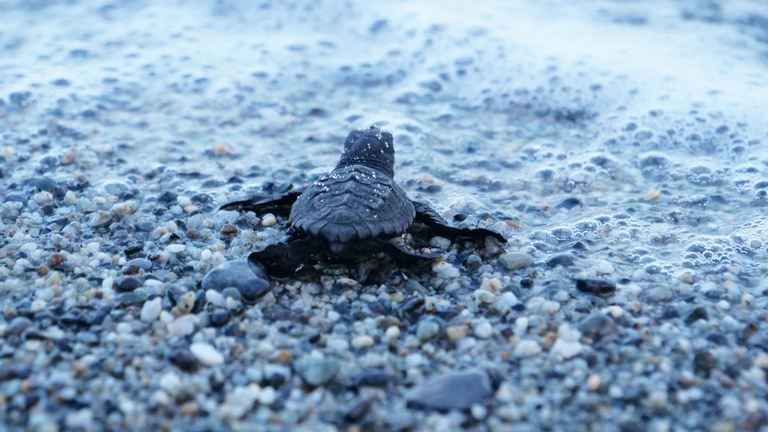
RELEASE OF THE FIRST BOOK ON SEA TURTLES CONSERVATION WORK IN LIBYA ON THE OCCASION OF THE WORLD SEA TURTLE DAY
The Libyan Ministry of Environment and UNEP/MAP-SPA/RAC are pleased to publish a new book entitled: Marine Turtle Research and Conservation in Libya: A contribution to safeguarding Mediterranean Biodiversity
The Libyan Ministry of Environment and UNEP/MAP-SPA/RAC are pleased to publish a new book entitled: Marine Turtle Research and Conservation in Libya: A contribution to safeguarding Mediterranean Biodiversity
The book (available here) highlights ...
The Libyan Ministry of Environment and UNEP/MAP-SPA/RAC are pleased to publish a new book entitled: Marine Turtle Research and Conservation in Libya: A contribution to safeguarding Mediterranean Biodiversity
The book (available here) highlights the considerable field and laboratory work by the Libyan Sea Turtle Program, founded in 2005, to protect marine turtles from pollution, habitat destruction, illegal egg poaching and meat consumption.
The book issued in English includes introductions from Dr. Ali Alkekli, the National focal Point of the Mediterranean Action Plan, Mr. Elmaki Ayad Elagil, the Director of the Department of Nature Conservation in the Ministry of Environment of Libya and SPA/BD Focal Point, and Mr. Khalil Attia, the Director of SPA/RAC.
The general introduction elaborated by Mrs. Lobna Ben Nakhla and Mr. Atef Ouerghi Programme Officers at SPA/RAC presents the historical development of the Libyan Sea Turtle Program, which is closely linked to the evolution of the regional Action Plan for the conservation of marine turtles in the Mediterranean and the Libyan National Action Plan for Sea Turtles conservation.
The first chapter of the document deals with nesting ecology of sea turtles in Libya, and is based on data collected in beaches monitored annually between May and September from 2005 to 2019, by researchers of the Ministry of Environment and several environmental NGOs.
Chapter 2 discusses the sex-ratio estimations of loggerhead sea turtle hatchlings in Libyan beaches, and the importance of balancing these ratios as a result of the increase in the proportion of female turtles worldwide due to warming temperature in nesting beaches.
Chapter 3 includes findings of the programme on the identification of migration corridors and marine areas for Loggerhead Turtles nesting in West Sirte, while chapter 4 examines the results of the genetic studies in sea turtle populations in Libya. The last chapter (5) is about awareness activities and communication.
The book concludes with a set of recommendations for the future objectives of the Libyan Sea Turtle Program.
The new book was edited by Dr. Abdulmaula Hamza, former coordinator and co-founder of the Libyan Sea Turtle Program, in collaboration with a group of experts, researchers and university professors from Libya, Tunisia and Italy.
This book has been elaborated within the MAVA funded project “Conservation of marine turtles in the Mediterranean”, which supports the marine turtles work in Libya since 2017 under the coordination of Mr Mokhtar Said, from the Ministry of Environment.
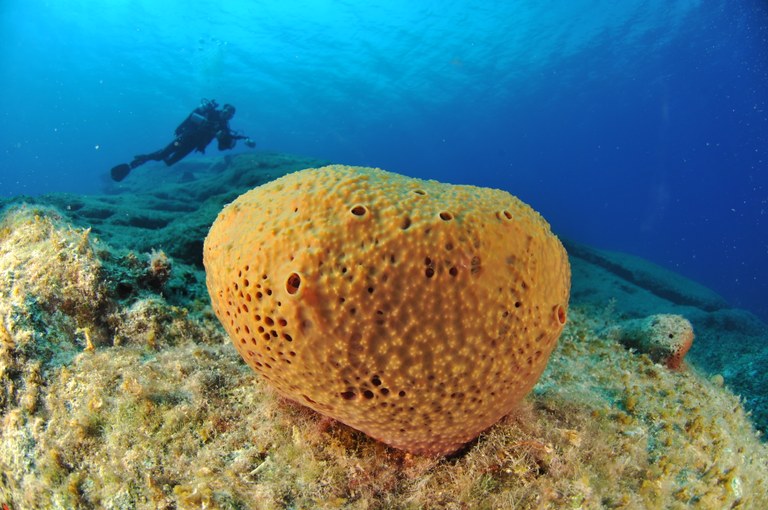
CORMON meeting on biodiversity monitoring in the Mediterranean
On 10-11 June 2021, UNEP/MAP-SPA/RAC organized the CORMON Biodiversity & Fisheries meeting to discuss, in particular, the elements of monitoring and assessment of marine turtles, birds and mammals, and non-indigenous species.
The implementation of ...
On 10-11 June 2021, UNEP/MAP-SPA/RAC organized the CORMON Biodiversity & Fisheries meeting to discuss, in particular, the elements of monitoring and assessment of marine turtles, birds and mammals, and non-indigenous species.
The implementation of the ecosystem approach within the Barcelona Convention is a living process. It is based on a system of governance structured around an Ecosystem Approach Coordination Group, the Focal Points of the MAP and its components, and three thematic Correspondence Groups on monitoring (CORMON). These three groups work respectively on the Good Environmental Status and Targets, monitoring and on economic and social analysis.
The main objective of the CORMON Biodiversity & Fisheries meeting, organised on 10-11 June 2021 by UNEP/MAP-SPA/RAC, was to review the following documents:
- Updated guidelines/protocols for monitoring common indicators 1 and 2 related to benthic habitats
- Monitoring and assessments elements (Assessment criteria/thresholds/baseline values) for the common indicators (CIs) 3, 4, 5 related to marine mammals and marine turtles and CI6 related to non-indigenous species
- Data dictionaries and data standards related to species
- Methodological approach for mapping interrelation between pressures-impacts and the status of marine ecosystem components for the biodiversity cluster; and
- Comparative analysis undertaken regarding IMAP and the European Commission GES Decision 2017/848/EU for biodiversity.
Several expert meetings beforehand
At the last CORMON meeting on Biodiversity and Fisheries (Teleconference, 1-2 December 2020), participants agreed to reactivate the Online Working Groups (OWG) on Biodiversity Common Indicators. These working groups are intended to provide the necessary scientific support to the Biodiversity and Fisheries’ CORMON during the thematic intersessional meetings and to help revising the documents to be discussed at the next CORMON Biodiversity and Fisheries meetings.
Thematic experts designated by volunteer Contracting Parties compose the working groups.
Several of the documents to be presented at the CORMON meeting were revised by the experts of the online working groups between March and April 2021. Below is an overview of what was discussed by the experts.
- Online Working Groupon marine turtles (Videoconference, 29 March 2021): The purpose of the meeting was to discuss the project the draft document on the monitoring and assessment scales, assessment criteria, thresholds and baseline values of the IMAP common indicators 3, 4 and 5 on sea turtles.
This document presents information, perspectives and recommendations on i) revising the existing scales of monitoring, ii) establishing suitable scales of assessment and appropriate assessment criteria, and iii) establishing appropriate baseline and threshold values on which to base the assessment of the Good Environmental Status (GES) in the Mediterranean. The document is being elaborated with the financial support of the European Union (EU) in the framework of the IMAP-MPA project. - Online Working Groupon marine mammals (Videoconference, 7 April 2021): The aim of the meeting was to discuss the draft document on the monitoring and assessment scales, assessment criteria, thresholds and baseline values of the IMAP common indicators 3, 4 and 5 on marine mammals.
This document contains the same elements as the document on marine turtles. It was also developed with financial support from the EU under the IMAP-MPA project. - Online Working Groupon Non-Indigenous Species (NIS) (Videoconference, 20 April 2021): The purpose of the meeting was to discuss the revised Guidance Factsheet of the IMAP common indicator 6 (CI6) on NIS which reflects the proposed changes requested by the Contracting Parties during the Integrated Meetings of the Ecosystem Approach Correspondence Groups on IMAP Implementation (CORMONs), held by Videoconference, between 1 and 3 December 2020.
Discussions also focused on a draft document on the monitoring and assessment scales, assessment criteria and thresholds values of the IMAP CI6 on NIS. This document is being elaborated with the financial support of the EU in the framework of the IMAP-MPA project. - Online Working Groupon sea birds (Videoconference, 16 April 2021): The discussion and consultation meeting focused on the species to be considered for the elaboration of monitoring and assessment scales, assessment criteria, thresholds and baseline values of the IMAP common indicators on sea birds.

The SPA/BD focal points held their 15th meeting
The participants reviewed UNEP/MAP-SPA/RAC activities during the present biennium and discussed updated action plans, new measures and strategies for the conservation, monitoring and management of biodiversity in the Mediterranean.
Exceptionally ...
The participants reviewed UNEP/MAP-SPA/RAC activities during the present biennium and discussed updated action plans, new measures and strategies for the conservation, monitoring and management of biodiversity in the Mediterranean.
Exceptionally this year, the focal points for Specially Protected Areas and Biological Diversity (SPA/BD) meeting was held by videoconference from 23 to 25 June 2021 due to the sanitary conditions imposed by the COVID-19 pandemic. The meeting saw the participation of 20 Contracting Parties of the Barcelona Convention and representatives of several MAP components and partner organisations.
Updated Action Plans for better conservation of species and habitats
The discussion focused first on the updated regional action plans for the conservation of cetaceans (updated in close collaboration with ACCOBAMS) and of habitats and species associated with seamounts, underwater caves and canyons, aphotic hard beds and chemo-synthetic phenomena in the Mediterranean Sea (Dark Habitats Action Plan). The meeting reviewed and endorsed the draft action plans and agreed on their submission to the MAP focal points meeting and the 22nd Conference of the Parties (COP22) for adoption.
The meeting also endorsed the proposal on the first elements to elaborate the List of Reference of Pelagic Habitat Types in the Mediterranean Sea and recommended to establish a multidisciplinary group of experts to elaborate the List for consideration by COP23.
The Ballast Water Management strategy for the Mediterranean Sea: 2022-2027, which has been prepared by REMPEC in cooperation with SPA/RAC to address, notably, the introduction of alien and invasive species issue, will be also submitted to the MAP focal points meeting and COP22.
Advancing marine protected areas in the Mediterranean region
The Post-2020 Regional Strategy for Marine and Coastal Protected Areas (MCPAs) and other effective area-based conservation measures (OECMs) in the Mediterranean is one of the major strategies proposed by SPA/RAC to conserve biodiversity. Marine Protected Areas (MPAs) are indeed a powerful tool to preserve and restore ecosystems, and thus an essential catalyst to move towards a sustainable and healthy Mediterranean.
The Post-2020 Regional Strategy on MCPAs and OECMs includes specific actions on improving governance arrangements of MCPAs and OECMs, expanding soundly designed, ecologically representative and well-connecting systems of MCPAs, identifying, recognizing and reporting marine and coastal OECMs, management effectiveness of MCPAs, as well as mobilizing actions and support for MCPAs and OECMs.
The meeting reviewed and endorsed the document proposed by SPA/RAC. It was also agreed to make a reference to the strategy within the Post-2020 Strategic Action Programme for the Conservation of Biodiversity and Sustainable Management of Natural Resources in the Mediterranean Region (Post-2020 SAPBIO) to ensure that the objectives / targets related to MCPAs & OECMS in both documents are aligned.
The elaboration of the strategy for MCPAs & OECM has benefited from the scientific and technical support of the Ad hoc Group of experts for MPAs in the Mediterranean (AGEM), which has also been working during the last biennium 2020-2021, on the SPAs criteria and directory and OECMs identification and reporting in the Mediterranean.
The SPAMIs in the spotlight
There are currently thirty-nine Specially Protected Areas of Mediterranean Importance (SPAMIs) listed under the SPA/BD Protocol.The sites included in the SPAMI List are intended to have a value of example and model for the protection of the natural heritage of the region. 11 SPAMI ordinary periodic reviews have been carried out over the last two years and have confirmed that the areas concerned are well managed.
The meeting welcomed the draft guidance for identifying and designating Particularly Sensitive Sea Areas (PSSAs) in relation to SPAMIs, prepared by REMPEC in cooperation with SPA/RAC, as a useful and practical tool to further protect SPAMIs from international shipping through the PSSA designation.
The meeting also welcomed the initiative and concepts to set up the SPAMI Day and a SPAMI Certificate, aimed at addressing the challenges related to communication and outreach about SPAMIs, and effective MPA management in general.
Monitoring the Mediterranean Sea and coast
Assessing and monitoring the status of the marine and coastal environment is crucial to achieve and maintain the Good Environmental Status of the Mediterranean. The meeting endorsed the new elements and tools proposed by SPA/RAC for monitoring benthic habitats, marine mammals, marine turtles and non-indigenous species (NIS), and agreed to consider their use for the purpose of the 2023 Mediterranean Quality Status Report (2023 MED QSR).
During the last biennium 2020-2021, several activities were undertaken at national and regional level within the framework of the implementation of the Integrated Monitoring and Assessment Programme (IMAP). These include support to southern Mediterranean countries for the implementation of monitoring programmes in selected sites, the establishment of national IMAP committees and the setting up of informal Online Working Groups, which provided important scientific feedback and technical support for the preparation of biodiversity monitoring and assessment elements.
Some activities were carried out in the framework of projects. The European Union HORIZON 2020 project ODYSSEA has supported various IMAP indicators recording in sizeable marine areas throughout the Mediterranean with innovative technological tools, while the GEF Adriatic project contributed to implementation of both IMAP and Marine Spatial Planning processes under the Barcelona Convention in the Adriatic Sea and particularly in Albania and Montenegro.
The post-2020 SAPBIO
The Post-2020 SAPBIO was certainly the agenda item that took up most of the discussion time at the SPA/BD thematic focal points meeting. The new strategy is a MAP flagship product, which aims to unite the efforts of all Mediterranean stakeholders for the conservation of marine and coastal biodiversity.
To recall, the SAPBIO addresses the most urgent drivers to relief the pressure on biodiversity, including those that overarch beyond the strict environmental sector, for example, to foster adequate incentives for the sustainable use of marine and coastal natural resources, to reduce conflicts among overlapping uses, developing marine spatial planning and integrated coastal management, and to mainstream biodiversity into sector/cross-sector policies, including the valuation and accounting of natural capital and ecosystem services.
The post 2020 SAPBIO also proposes actions to strengthen some enabling conditions, such as improving governance and management systems, closing knowledge gaps to efficiently monitor changes, building capacities, improving the funding conditions from national sources, and largely reinforcing cooperation between countries and from international actors.
The goals, targets and actions tables of the strategy were thoroughly discussed during the meeting, including within the framework of a working group, to build consensus. The revised draft Post- 2020 SAPBIO will be submitted to the next MAP focal points meeting and COP 22 for adoption.
All the documents of the 15th SPA/BD focal points will be available soon on the SPA/RAC website.
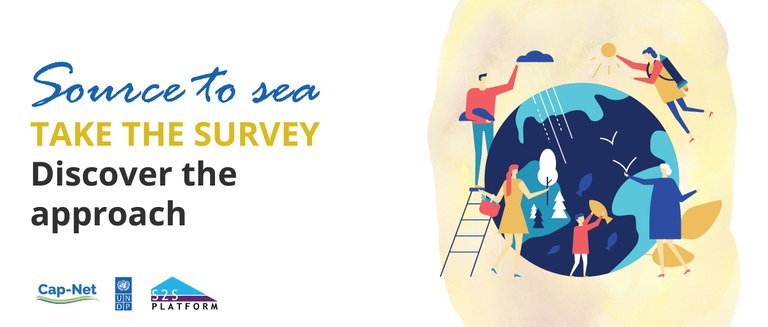
Source to sea : take the survey, discovery the approach
Cap-Net UNDP in collaboration with the Secretariat of the Action Platform for Source-to-Sea Management (S2S Platform) and its partners, are pleased to invite you to participate in an online survey to evaluate your knowledge of and experience in ...
Cap-Net UNDP in collaboration with the Secretariat of the Action Platform for Source-to-Sea Management (S2S Platform) and its partners, are pleased to invite you to participate in an online survey to evaluate your knowledge of and experience in coordinated management of land, freshwater, coasts and the ocean. The aim is to assess the level of technical knowledge and institutional capacities available for coordinated management of freshwater, land, coasts and the ocean and engagement of upstream and downstream stakeholders.
It should take approximately 20 minutes to complete. Participating in the survey will provide us with the necessary knowledge to be able to develop tailored capacity development initiatives that aim to meet your needs on the ground.
You can access the survey here: https://cap-net.org/source2sea/ or by clicking on the image below
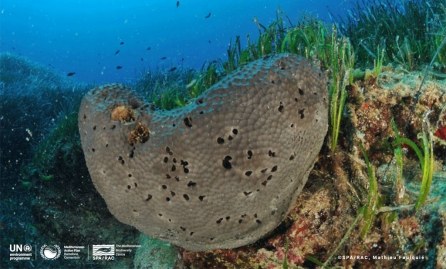
SUB-REGIONAL WORKSHOP ON THE DESIGNATION OF MARINE PROTECTED AREAS IN ALBANIA, BOSNIA & HERZEGOVINA AND MONTENEGRO
UNEP/MAP-SPA/RAC participated in the TAIEX EPPA sub-regional workshop, held online on 20-21 April 2021
The sub-regional workshop on the designation of marine protected areas is an initiative of the EC-TAIEX Environment Partnership Programme for ...
UNEP/MAP-SPA/RAC participated in the TAIEX EPPA sub-regional workshop, held online on 20-21 April 2021
The sub-regional workshop on the designation of marine protected areas is an initiative of the EC-TAIEX Environment Partnership Programme for Accession (EPPA) to present the scientific basis for evaluating potential areas for the establishment of new marine protected areas (MPAs) in Albania, Bosnia & Herzegovina and Montenegro and in the Adriatic Sea basin in general, as well as recommendations for their management.
The core of the EPPA study for designating new MPAs in the three beneficiary countries, are individual country reports and recommendations: the report for Albania proposes two new MPAs: the Porto Palermo zone and the Lalzi bay Rodoni/Cap Paton area. For Bosnia & Herzegovina a cross border site is proposed in the Neum-Klerk bay and Mali Ston bay linking with an adjacent area in Croatia already declared as a protected site within Natura 2000. The report for Montenegro also proposes two sites Platamuni and the Katie-Ratac zone. Additionally, on a regional scale, the area located in the southern Adriatic basin and the northern Ionian Sea, considered to be an Ecologically and Biologically Significant Marine Area (EBSA), was also proposed to become a regional MPA in the south Adriatic, possibly through the declaration of a transboundary Specially Protected Areas of Mediterranean Importance (SPAMI). This includes areas within the jurisdiction of Albania, Montenegro, Bosnia & Herzegovina, Croatia and Italy.
Represented by Souha El Asmi, Specially Protected Areas programme officer, SPA/RAC participated in the workshop to contribute to the discussion on the EPPA Study and Recommendations for the designation of Marine Protected Areas in Albania, Bosnia and Herzegovina and Montenegro and to share updates on the elaboration process of the Post-2020 Regional Strategy for Marine Protected Areas and Other Effective area-based Conservation Measures in the Mediterranean.
An ambitious but realistic strategy for MPAs
The Mediterranean Sea is a biodiversity hotspot. The marine and coastal ecosystems are among the most important in the world in terms of species diversity, but with increasing anthropogenic pressure their resilience, as well as the services they provide to human societies, are under threat.
It is now well established that fully protected, well-designed, well-managed, and well-enforced MPAs can protect important marine resources and support the economy and culture of the region. The Mediterranean countries have been investing in marine protected areas for several decades and a significant progress has been made in recent years.
The 10% coverage of conserved areas requested by the CBD Aichi Target 11 is not far off, with 1,137 MPAs covering 8.3% of the basin. This percentage doesn’t include OECMs, given that no marine OECMs have been already declared to the CBD, in the Mediterranean region, so far.
However, this coverage hides an uneven distribution of MPAs across the Mediterranean Sea and across Parties to the Barcelona Convention. 97.3% of MPAs are located in the European Union waters, and they are mainly coastal and in shallow waters*.
Furthermore, Aichi Target 11 is not limited to reaching 10% coverage. Having ‘’effectively and equitably managed” MPAs and OECMs by 2020 implies that numerous qualitative improvements be made, in link with: legal frameworks and governance, availability of adequate funding, systematic management planning, appointment of sufficient permanent staff, regulations and surveillance, stakeholder engagement, and integration with Marine Spatial Planning.
All these considerations are reflected in the new Post-2020 Strategy for Mediterranean MPAs and OECMs. The proposed actions aim notably to expand the protected areas network and to enhance its governance and management effectiveness. The strategy is being developed by SPA/RAC in line with the Post-2020 Global Biodiversity Framework of the CBD and other relevant global and regional processes, and through a consultative and integrated process to ensure that the actions proposed are both transformational and realistic.
How to develop a system of effectively and equitably managed MPAs and OECMs in the Mediterranean?
The first step in the elaboration of the Post-2020 Strategy for Mediterranean MPAs and OECMs was to identify the barriers, their drivers and the key actions to mitigate the obstacles, all through a wide consultation process. As a result, five strategic pillars were identified. The new strategy addresses the coverage issue, but also qualitative aspects related to management, governance, and government and stakeholder’s support and action. It also considers OECMs as a key axis to increase the coverage of sustainably managed areas in the Mediterranean.
The five strategic pillars and their respective outputs and outcomes will serve the following overall goal: “By 2030, 30% of the Mediterranean Sea is protected through a well-connected and effective system of protected areas and other effective area-based conservation measures”. This (non-definitive) goal is inspired by the post-2020 CBD target currently under negotiation.
Work on the strategy is still ongoing. The first draft has been presented and discussed during a 2-day online Stakeholder Consultation Workshop (8-9 April 2021), that was attended by 51 participants from national institutions, universities, UN and other intergovernmental organizations, NGOs and individual experts.
Two other workshops will be organized soon to finalize the draft strategy, respectively with the Ad hoc group of experts for MPAs in the Mediterranean (AGEM) on 3-4 May 2021, then with the SPA/BD Focal Points on 18 May 2021. After these preparatory consultations, the draft strategy will be formally submitted to the 15th meeting of SPA/DB Focal Points (videoconference, 23-25 June 2021), then to the MAP Focal Points meeting (Athens, Greece, 14-17 September 2021) and eventually to COP 22 (Antalya, Turkey, 7-10 December 2021).
* More information on Mediterranean MPAs will be available in the new edition of the Status of Mediterranean MPA that will be published on the occasion of the next MPA forum, an initiative of MedPAN and SPA/RAC, which third edition is co-organized by SPA/RAC, MedPAN, WWF, and the Prince Albert II of Monaco Foundation.
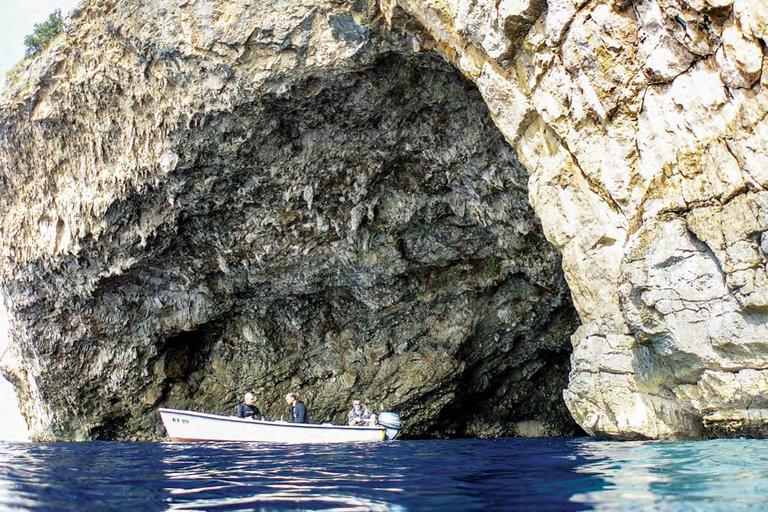
Platamuni, first Marine Protected Area in Montenegro
On International Mother Earth Day, 22 April 2021, Montenegro has declared its first Marine Protected Area (MPA) in Platamuni. The value of biodiversity is the primary reason for this declaration.
The Nature Park "Platamuni" is accommodated in the ...
On International Mother Earth Day, 22 April 2021, Montenegro has declared its first Marine Protected Area (MPA) in Platamuni. The value of biodiversity is the primary reason for this declaration.
The Nature Park "Platamuni" is accommodated in the northwest part of the coastal waters in Montenegro, including associated coastline between the Cape Žabica in the northwest and Cape Platamuni in southeast near the beach Ploče. The main reason for proclaiming this first MPA in Montenegro is protecting its ecologically important marine and coastal species and habitats (See the article on the official announcement, in Montenegrin).
The Platamuni area is characterized by its main marine cave at the south of Bigova, with at its entrance an extraordinary development of bio-constructions. It also hosts a vast Posidonia oceanica meadow on rock at the western side of Greben Kalafat, continuing by deep coralligenous assemblages on rock.
This particular area has benefited in recent years from the support of SPA/RAC, notably through regional projects on marine and coastal protected areas and key habitats mapping in the Mediterranean.
From field surveys to protection measures
In the framework of the MedMPAnet project, implemented under the UNEP/MAP-GEF MedPartnership with the financial support of EC, AECID and FFEM, several survey missions (in 2008, 2011 and 2012) have been carried out along the Montenegrin coast to assess benthic and fish assemblages as well as human activities. The objective was to contribute to the definition of specific protection/management measures for the Montenegro coast. Following these surveys, the Platamuni area was identified as one of the three areas that deserve “priority protection”, due to its high habitat complexity and fish species richness (Read the assessment survey report).
The Platamuni area was further studied in the framework of the MedKeyHabitats project funded by MAVA Foundation. This beneficiary site was chosen in agreement with the Montenegrin Ministry for the Sustainable Development and Tourism, in order to improve knowledge of the area’s marine benthic habitats with a view to protecting them. A total surface area of 880 ha (8.4 km2) has been prospected and 220 marine species have been inventoried, including 23 species listed within international conventions. Several marine habitats of conservation interest have been identified and mapped, including Posidonia oceanica meadows and coralligenous biocenoses, which cover 38.62 ha and 1.93 ha, respectively (Read the report on marine habitats mapping).
Two strategies to come for a healthier Mediterranean
The declaration of the Platamuni area as an MPA is an important step for the conservation of biodiversity in the Mediterranean. MPAs can be an effective tool for the protection of important marine resources and the restoration of fragile ecosystems, when well-designed, well-managed and well-enforced. They can also bring considerable benefits to societies and support their economy.
SPA/RAC continues to support the Contracting Parties of the Barcelona Convention to better protect the Mediterranean Sea and coasts through its programme of work and externally funded projects, which help to implement nationally or regionally agreed conservation measures, or its strategies. In this respect, two new strategies are being developed by SPA/RAC: the post-2020 SAPBIO and the Post-2020 Regional Strategy for Marine Protected Areas and Other Effective area-based Conservation Measures in the Mediterranean.
These strategies benefit from broad consultative processes and will serve for the next decade as a common framework for marine and coastal biodiversity conservation in the Mediterranean.
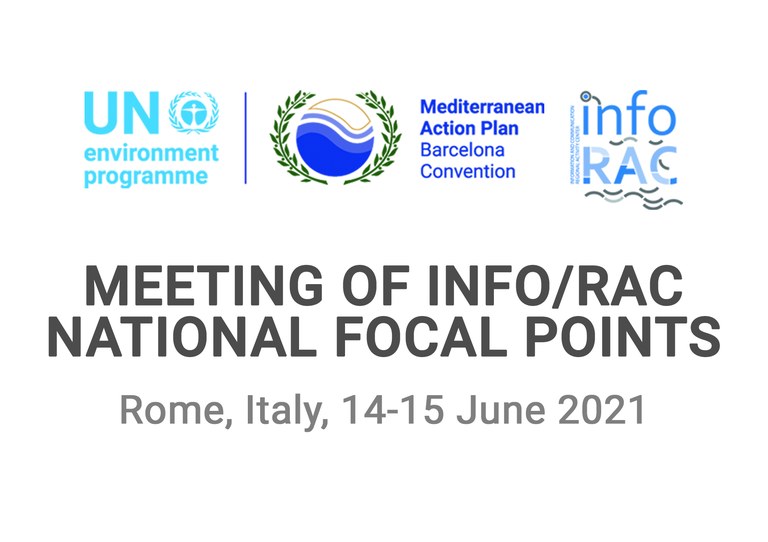
INFO/RAC NATIONAL FOCAL POINTS MEETING
The meeting of INFO/RAC Focal Points was held online due to the sanitary conditions imposed by the COVID-19 pandemic, on 14-15 June 2021 and saw the participation of 17 representatives of the Contracting Parties to the Barcelona Convention, the ...
The meeting of INFO/RAC Focal Points was held online due to the sanitary conditions imposed by the COVID-19 pandemic, on 14-15 June 2021 and saw the participation of 17 representatives of the Contracting Parties to the Barcelona Convention, the UNEP/MAP Acting Coordinator and the representatives MAP components.
The main objective of the meeting was to update the National Focal Points of the Regional Activity Centre for Information and Communication on the ongoing and future activities of the Centre and to review INFO/RAC’s activities in compliance with the Programme of Work 2020-2021 adopted at COP21 held in Napoli in December 2019.
The Focal Points also discussed and approved important topics in view of the next COP to be held in December 2021 in Antalya (COP22).
Almost all of the first day of the meeting was dedicated to review the progress report on the status of implementation of the Programme of Work 2019-2020 highlighting the main achievements and challenges.
Thorough presentations were given on different topics such as InfoMAP the Information System of UNEP/MAP, the online reporting systems (NBB, BCRS), IMAP Info System, InfoMAPNode, Security, Cloud and on interoperability of systems and data management.
The meeting strongly encouraged the harmonization and integration of existing national platforms into the infoMAP platform both from thematic and data management point of view and welcomed the strategic role of the INFO/RAC Focal Points as contact points in the coordination of national data flows for the MAP reporting. The meeting also encouraged to provide more information on how to report data in each specific reporting system through users guides and video-training and welcomed IMAP constant and cross-cutting support for the reporting on IMAP Info System platform.
During the meeting the different activities carried out during the last biennium 2020-2021 were presented in particular on E-learning and communication with the presentation of the different digital campaigns developed and launched, the release of the MED News newsletter and the Citizen Science activities related to the SeaWatcher App.
The Meeting appreciated the work done by INFO/RAC in close collaboration with other MAP Components and CU on the implementation of the MAP Operational Strategy and encouraged the prosecution of the work in the next biennium.
Two important documents were also presented for review and approval for the next biennium: Towards a MAP Knowledge Management Strategy and Towards a MAP Digital Transformation Strategy. The Meeting welcomed the proposed documents and endorsed the development of both strategies for the next biennium and took note on how a common strategy for knowledge management and dissemination, is required with the scope to unify operational strategies, enhance environmental capabilities and strengthen dissemination capabilities to stakeholders, institutional partners, and citizens.
The Meeting reviewed and endorsed the MAP Data Policy developed by INFO/RAC that will be submitted to the meeting of MAP Focal Points and COP 22 for adoption and acknowledge the development of the MAP Data Policy as framework to facilitate the data sharing and reducing the legal barriers.
The last part of the meeting was devoted to the presentation of the proposed plan of activities for the Draft Programme of Work 2022-2023 which was welcomed with satisfaction and reflects the good progress made in the last two biennia by INFO/RAC. The Meeting encouraged INFO/RAC to continue its efforts to promote the planned activities and their related deliverables within the whole MAP Programme of Work.
